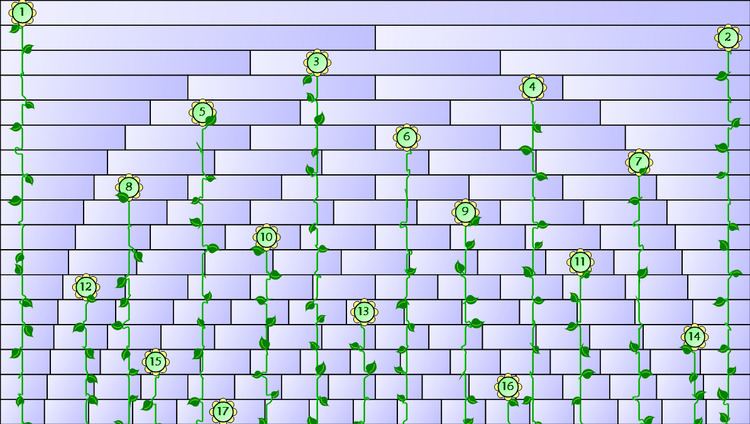The irregularity of distributions problem, stated first by Hugo Steinhaus, is a numerical problem with a surprising result. The problem is to find N numbers, x 1 , … , x N , all between 0 and 1, for which the following conditions hold:
The first two numbers must be in different halves (one less than 1/2, one greater than 1/2).The first 3 numbers must be in different thirds (one less than 1/3, one between 1/3 and 2/3, one greater than 2/3).The first 4 numbers must be in different fourths.The first 5 numbers must be in different fifths.etc.Mathematically, we are looking for a sequence of real numbers
x 1 , … , x N such that for every n ∈ {1, ..., N} and every k ∈ {1, ..., n} there is some i ∈ {1, ..., n} such that
k − 1 n ≤ x i < k n . The surprising result is that there is a solution up to N = 17, but starting at N = 18 and above it is impossible. A possible solution for N ≤ 17 is shown diagrammatically on the right; numerically it is as follows:
x 1 = 0.029 x 2 = 0.971 x 3 = 0.423 x 4 = 0.71 x 5 = 0.27 x 6 = 0.542 x 7 = 0.852 x 8 = 0.172 x 9 = 0.62 x 10 = 0.355 x 11 = 0.774 x 12 = 0.114 x 13 = 0.485 x 14 = 0.926 x 15 = 0.207 x 16 = 0.677 x 17 = 0.297 In this example, considering for instance the first 5 numbers, we have
0 < x 1 < 1 5 < x 5 < 2 5 < x 3 < 3 5 < x 4 < 4 5 < x 2 < 1. 
